Originality: Escape The SERP Fluffyfication

Boost your skills with Growth Memo’s weekly expert insights. Subscribe for free!
Google announced a -40% reduction of low-quality, unoriginal content with the latest core update.
Based on our evaluations, we expect that the combination of this update and our previous efforts will collectively reduce low-quality, unoriginal content in search results by 40%.
Why not -100%? There are only a few options: the remaining 60% are very ambiguous, meaning it’s hard to differentiate between high and low quality, or there simply isn’t enough high quality to replace low-quality content.
It’s not a problem of knowing. If Google knows what 40% is, they know 100%. What if the open web simply doesn’t have enough good content anymore?
SERP Fluffyfication
The announcement says to “reduce unoriginal content in search results.” This is the first time I recognized Google using the word “original” in context with “quality.” I like the word because it really describes what most SERPs look like these days.
Most search content is unoriginal. The problem isn’t that content is optimized for search but that it’s optimized in a lazy way. Google doesn’t crave fast food.
And many users have reached saturation as well.
When people say, “You can’t find anything on Google these days,” they don’t mean, “Google doesn’t show search results for my query.”
They mean, “Google’s long-tail results are really bad, and Google shows me mostly fluff.”
That “fluff,” poorly done listicles or skyscraper articles, has worked so far, but it damages Google’s user experience. The SERPs need more substance, which is what the current Core update is about.
Unoriginal content = anything you can answer with common sense.
Original content = anything counter to common sense, exceeding expectations, or high complexity explained in an easy way.
Many clients I work with want more organic traffic, but they don’t want to create “SEO content.”
Google’s (core) algorithms are constantly evolving, but the mechanics behind blue links have been static enough for SEOs to figure out the winning formula.
Since Google search is a zero-sum game with a clear winning formula, the majority of content converges towards an optimum, which means it looks the same.
Example 1
For the query “how to create a strategy,” Google shows results in a mix of company blogs, social posts, and university (Harvard) articles in the top 10.
Most articles are very repetitive, as you can see in the screenshot below, where I compared the headings of the top 3 results.
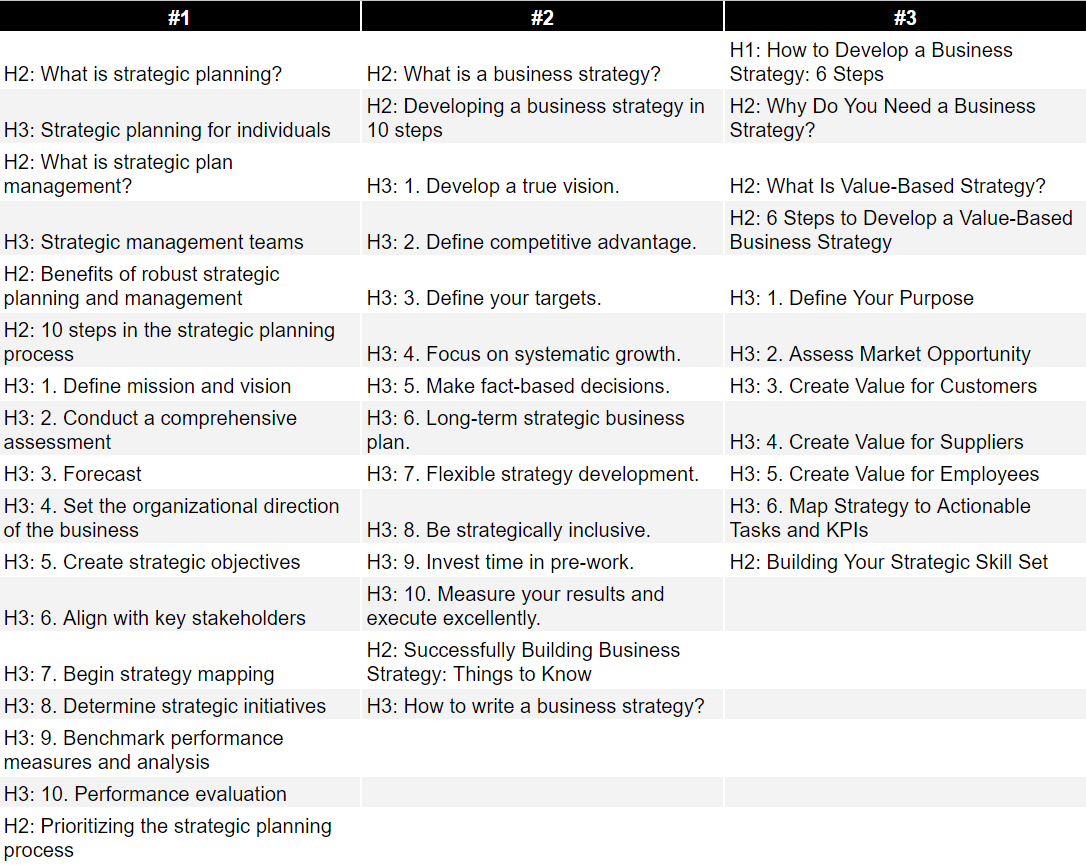
On top of that, they’re not helpful.
Vision and mission, for example, are not part of a strategy. Neither is forecasting.
Some articles suggest running a SWOT analysis but fail to explain that SWOTs need to be geared towards a specific problem – which, by the way, is the original starting point for any strategy. But no article in the top 5 even mentions the word “problem” a single time. This content wouldn’t have passed an MBA.
At the same time, good content doesn’t rank because it’s not optimized for search.
A great example is Packy McCormick’s “In defense of strategy.”
The piece explains how to create a strategy, cleans up common assumptions, is well-written, and based on first-hand experience. In other words, it’s original. But Google doesn’t rank it for anything because the title isn’t optimized, internal linking could be stronger, and it might not hit the right embeddings.
McCormick has done what Google wants: Focus on creating good content for users. But Google doesn’t reward him with organic traffic. Instead, it sends traffic to articles that hit the winning formula – and that’s part of the problem.
Example 2
Another example is the query “how to build a community.”
I want to show a few screenshots of the top results. Can you spot the fluff? Many words, little substance.
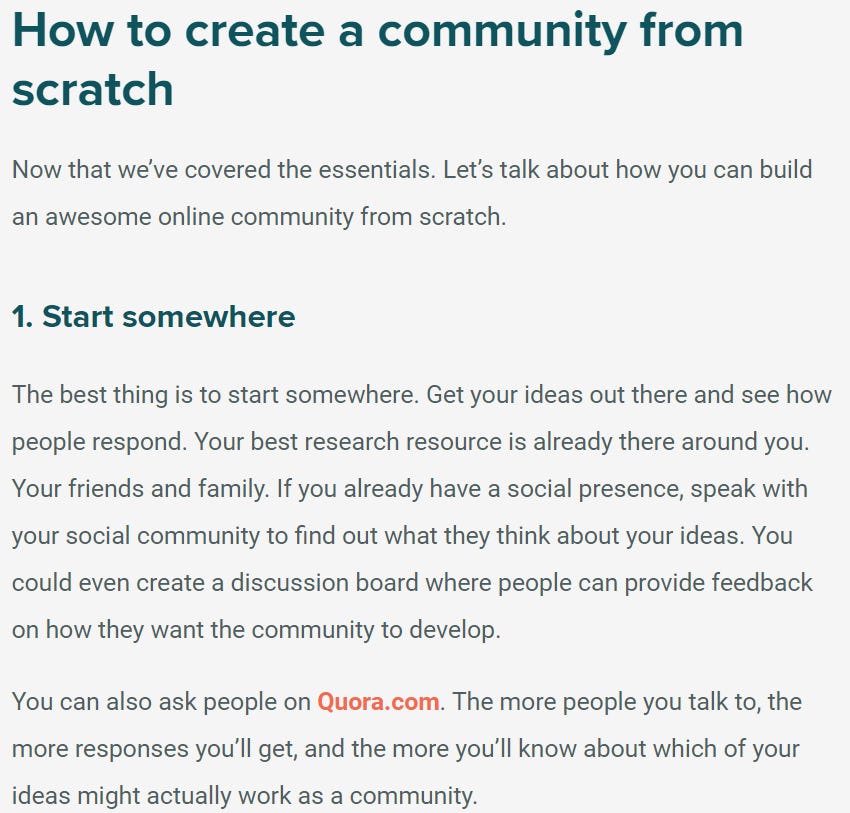 Image Credit: Kevin Indig
Image Credit: Kevin Indig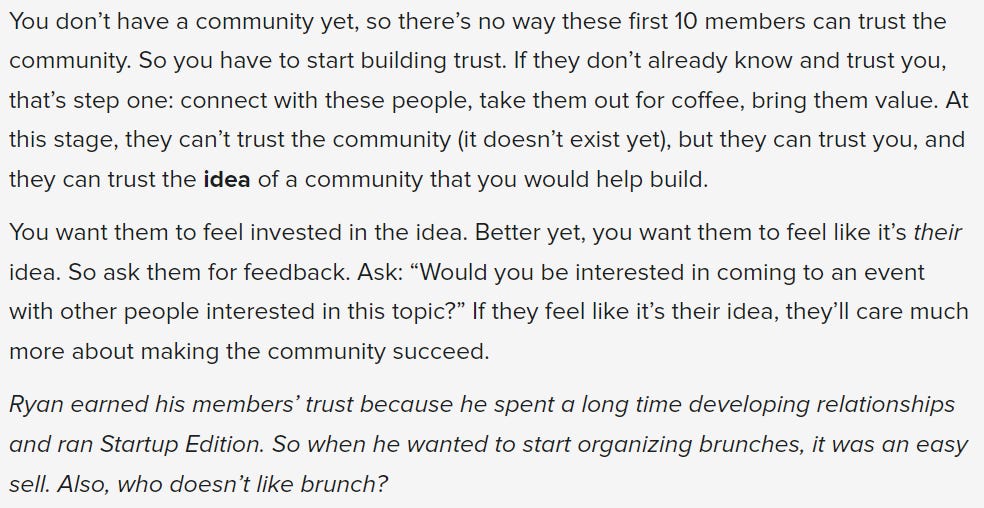 Image Credit: Kevin Indig
Image Credit: Kevin Indig Image Credit: Kevin Indig
Image Credit: Kevin Indig Image Credit: Kevin Indig
Image Credit: Kevin Indig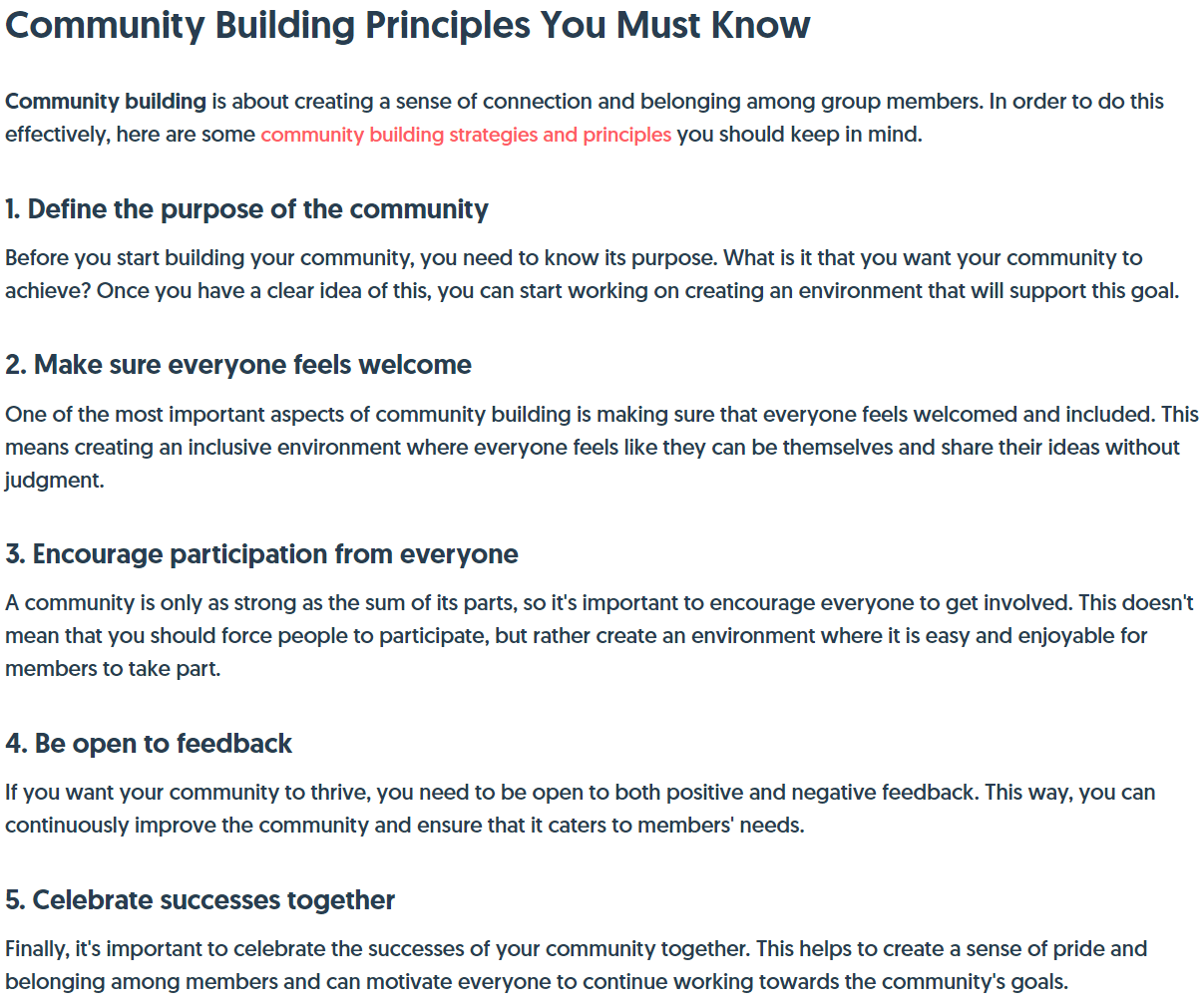 Image Credit: Kevin Indig
Image Credit: Kevin Indig(I don’t want to pose. My writing skills are merely good enough to spot bad writing. But I aim to have a high density of insights per word.)
Once again, we can tell by the headings how little substance most articles in the top 3 positions have.
 Image Credit: Kevin Indig
Image Credit: Kevin IndigOne article in the top 10 results (No. 8) was written by someone who has built a community before – twice.
Unfortunately, the article doesn’t dive into why communities are important, what they are, and other sub-topics Google deems important. As a result, it doesn’t rank higher.
Where Is All The Good Content?
If the theory that Google doesn’t have enough good content to replace low-quality results holds true, experts have either seized to create content or they’re creating it elsewhere.
I have a guess: Content creation capacity moved from text to video and audio. Instead of creating more blog content, business and consumer creators are creating more YouTube videos and podcasts.
That’s where the attention is. The number of podcast listeners has increased by 45% from 2018 to 2023 and doubled from 2013 to 2023. Over 30% of Americans listen to podcasts weekly.
Maybe Google shows more videos in the SERPs because text results simply aren’t as good.
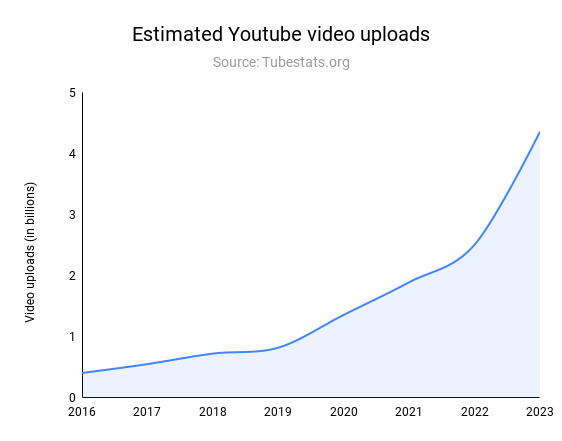 YouTube is exploding in size (Image Credit: Kevin Indig)
YouTube is exploding in size (Image Credit: Kevin Indig)It’s not just a B2B phenomenon; 66% find short video clips more engaging than text. Shocked much? Probably not. But it’s more than just the visual nature of video that makes a difference here. We put more effort into video production because it’s harder and costs more.
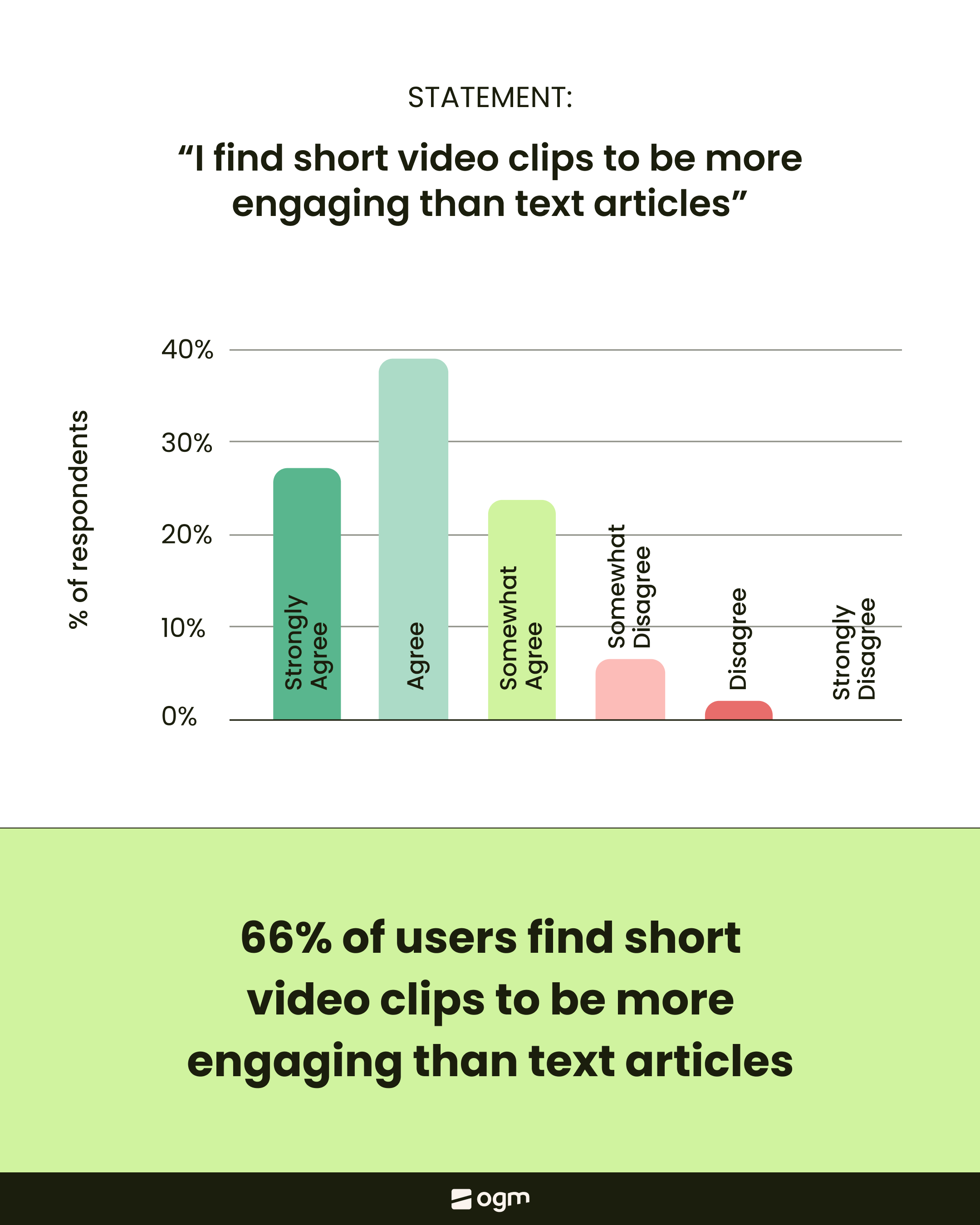 Users are more engaged by short-form videos than text (link)
Users are more engaged by short-form videos than text (link)And you can’t blame users. The quality of content is much higher.
For the search term “how to define a strategy,” the top results on YouTube are all older than one year – one is even 14 years old. Video is much harder to produce, so people put more effort into it.
Since success on YouTube is so dependent on engagement, low-quality productions don’t get many eyeballs.
Google has spent the last years getting better at understanding content to diversify away from relying on user signals (remember “we fake it”?).
From Elephant in the Room:
Our model of what’s important in SEO has been wrong for a long time. We thought content was the basis, backlinks the middle layer and user signals sprinkled on top. It turns out user signals were the basis, with a middle layer of backlinks and content understanding sprinkled on top.
Google might just now get better at really understanding content quality. Besides being able to understand word N-grams first and then embeddings and vectors later, it seems Google was never able to understand what good content is without user signals.
Maybe what Google needs is less content understanding and a stronger emphasis on user signals like YouTube.
Opportunity
So, what’s the takeaway?
When competing with written content, only doing “what’s good for the user” simply isn’t enough. You need to find a balance between writing for search engines and writing for humans.
Figure out the most important sub-topics/embeddings/entities to cover. Analyze the top results. Make it juice for Google. But don’t stop there. Don’t be lazy.
Once the SEO stuff is taken care of, optimize for originality.
Ask yourself what would really make this piece stand out. Maybe original research. Or finding five people “who have done it” and interviewing them. Or finding a hard-to-get author. Whatever it is, it has to be difficult to imitate.
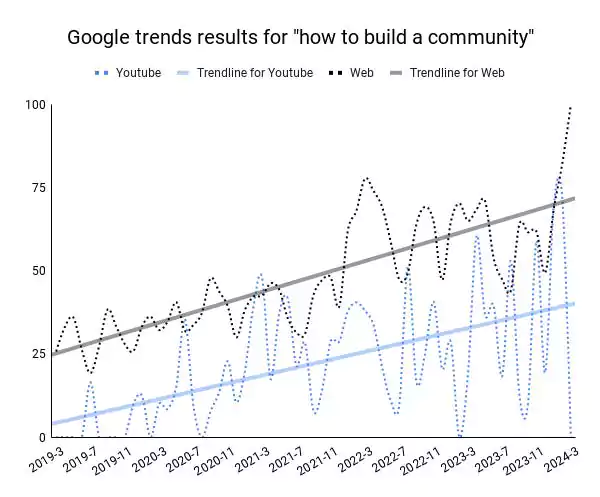 High correlation between searches for the same term on the web and YouTube (Image Credit: Kevin Indig)
High correlation between searches for the same term on the web and YouTube (Image Credit: Kevin Indig)Three more things:
- I’m speaking at Recommerce in London on Friday (March 15th). Use code SPEAKERVIP to get 10% off your ticket! If you’re around, email me back, and I’ll give you one free ticket. First come, first served.
- I’m speaking at Friends of Search in Amsterdam on March 21st. Come around and say hi!
- I’m speaking at SaaStock in Austin, TX, on May 14th and have two free tickets. To qualify, you need to be there for the conference and **** SaaS ;-). First come, first served.
https://blog.google/products/search/google-search-update-march-2024/
https://www.notboring.co/p/in-defense-of-strategy
Featured Image: Lyna ™
Source link : Searchenginejournal.com



